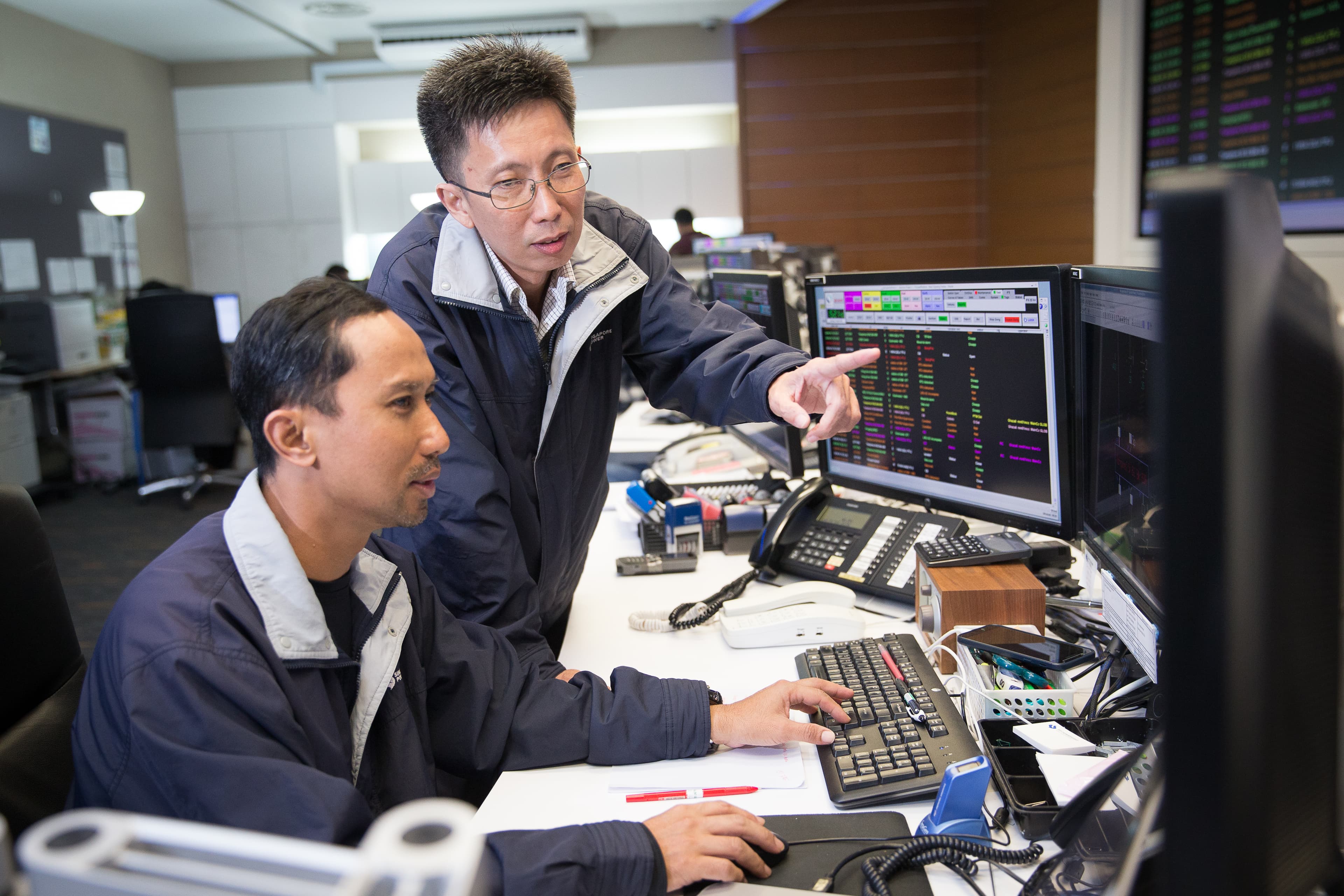Eye on the Grid

The ringing of Tan Teck Wee’s phone at 1.20am jolted him from his sleep. There was a blackout affecting several areas.
In the 30 minutes that Teck Wee, head of SP Group’s Distribution Control & Customer Service, took to get to the control centre at Ayer Rajah, work was already under way to bring supply back up.
As the central nervous system of Singapore’s power distribution network, red-coded alarms on the dashboard showed the affected locations. On one wall, screens displayed incident alerts, digital maps and data on energy demand from the 11,000 substations and over 27,000km of cables that make up Singapore’s electricity grid.
With various teams working together, power was restored within a few minutes, and Teck Wee was soon on his way home.
A 25-year SP veteran, Teck Wee is on standby 24/7. He oversees the work of 95 staff. Apart from the 15 staff who man the control centre around the clock, team members from the Electricity Service Centre receive calls from customers and mobilise officers to attend to supply disruption.
Emergency response makes up the bulk of his team’s work, even if most problems are solved before customers are impacted, explained Teck Wee, who trained as an electrical engineer.
Most often, when the alarms go off, it takes less than a minute for the incoming data to be reviewed, a remote restoration attempted, or for supply to be re-routed. A service crew is also dispatched for a manual check.
In a supply disruption, staff at the control centre will first try to restore supply through remotely switching to an alternate feed. If this is not possible, it will send out mobile generators to provide temporary power to customers. The team is supported by 20 standby officers deployed in five zones across Singapore. When activated, these standby teams examine and re-condition the substation equipment to rectify the issue.
Technology drives precise and prompt response. Through a combination of sensors, monitors, alarms, micro-processors and a communication network, the control centre team can quickly pinpoint and manage disturbances on the network.
Artificial Intelligence helps engineers make faster decisions through diagnostics of incidents to identify causes and possible actions.
Supply disruptions could occur for different reasons, such as roadworks which can damage cables, or accidents, says Teck Wee. A rogue snake or monitor lizard sneaking into an over-ground supply box could also cause an outage.
Singapore's electricity network ranks top among major cities. Based on a benchmarking report, in 2017, customers in Singapore experienced an average of 0.19 minute of electricity interruption, compared to Osaka’s 5 minutes and London’s 16.70 minutes. Despite that, Teck Wee says every incident is taken seriously, and the teams look closely at ways to prevent it from occurring again.
Keeping the nation’s grid going strong is a source of great pride. “Electricity affects quality of life in so many ways and it’s gratifying to know that we can play a part in upholding it for consumers, he said.
— 15 May 2019







